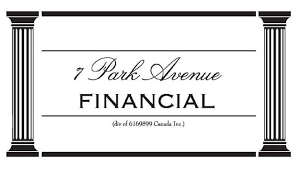|
Financing A Business Acquisition On Your Terms
Access Expert-Level Guidance on How to Finance a Business Acquisition
YOU ARE LOOKING FOR WAYS TO FINANCE BUYING A BUSINESS IN CANADA!
You've arrived at the right address! Welcome to 7 Park Avenue Financial
Financing & Cash flow are the biggest issues facing business today
ARE YOU UNAWARE OR DISSATISFIED WITH YOUR CURRENT BUSINESS FINANCING OPTIONS?
CALL NOW - DIRECT LINE - 416 319 5769 - Let's talk or arrange a meeting to discuss your needs
EMAIL - sprokop@7parkavenuefinancial.com

"Buying a business is easy. Financing it properly to ensure both short-term survival and long-term success—that's where the real entrepreneurial skill lies." — Warren Buffett.
FINANCING A BUSINESS ACQUISITION GROWTH STRATEGY IN CANADA
Ensure you have the right capital structure for your business purchase to transition smoothly through the business acquisition deal process.
This will position and protect you and any lenders or others involved with this transaction for longer-term success!
Understanding the right financing structure is crucial to finding a combination of funding that will allow a smooth ownership transition with success potential via the right typical financing package.
You must find a way of combining all types of financing required to complete a business purchase - equity financing, debt, cash flow, and seller finance - Solid financing allows for expansion and future growth opportunities.
Acquisition Dreams Meet Financial Reality
Finding capital to finance your business acquisition can feel overwhelming.
Many Canadian entrepreneurs struggle with limited personal resources, stringent bank requirements, and uncertainty about which financing options best match their business acquisition goals.
Let the 7 Park Avenue Financial team show you the full spectrum of financing methods—from traditional bank loans to innovative seller financing arrangements—so you can confidently pursue your acquisition strategy with appropriate financial backing.
Uncommon Perspectives on Business Acquisition Financing
- Rather than focusing solely on securing 100% external financing, consider a hybrid approach where you leverage partial seller financing alongside traditional lending, creating stakeholder alignment that increases your chances of long-term success.
- Look beyond the initial acquisition cost and secure financing that accounts for post-acquisition working capital needs—many acquisitions fail not from purchase price challenges but from cash flow constraints during the transition period.
- Consider acquisition financing as an opportunity to restructure the target company's existing debt obligations, potentially improving overall financial health beyond simply funding the purchase.
VALUING YOUR TARGET ACQUISITION
The first step in financing a company is to determine its worth.
There are numerous ways to calculate the value, one of which is analyzing EBITDA and taking out any non-recurring expenses—this is also known as ' normalizing the financials.' At 7 Park Avenue Financial, we spend time with clients to accurately 're-do' the financials to reflect the new business ownership and financial operations.
For example, a company with $300k in earnings but projected to grow might have an earnings multiple of 5 ( depending on the industry ) and potentially sell for $1.5 million.
Companies will often use multiples of their EBITDA to determine the acquirer’s price based on the quality of financials and issues such as growth prospects.
WHAT AMOUNT OF DOWN PAYMENT REFLECTS A BUYER'S COMMITMENT TO THE TRANSACTION
When a company or sole purchaser wants to buy another business, it often has to contribute money from its funds—which is almost always true in Canada.
Companies can finance their acquisitions in various ways, including buyer-contributed funds, which might come from any surplus cash the acquiring company or individual purchaser saved.
Equity participation is an important part of the acquisition process. It is a critical way to ensure that your business acquisition gets the financing it needs while also demonstrating commitment from all shareholders.
It demonstrates that shareholders are committed to ensuring their business's success and helps reduce borrowing needs by demonstrating financial responsibility. This, in turn, impresses banks, commercial finance companies, and asset-based lenders, who will be more likely to offer loans at favourable terms.
THE CRITICAL PART OF YOUR FINANCE PACKAGE
A senior lender typically provides the main loan for the target company, a secured term loan structure. Not everyone in Canada can access a private equity firm or ' family offices '!
Borrowers should understand that this type of financing is typically more restrictive than other alternatives. It has specific requirements for monthly payments and financial covenants related to company finances and industry trends so that payments can be made according to the loan terms under an optimal financing structure.
Senior lenders are often more restrictive about the terms of repayment. They will require the company to fulfill other conditions, such as maintaining financial covenants and financial ratios and spending limitations for new asses, etc. Cash flow financing is often added to a term loan structure.
SELLER FINANCING / VENDOR DEBT - AKA ' VENDOR TAKE-BACK '
A seller will sometimes provide a portion of the purchase price, with interest charges that are very flexible and tailored to the needs of the buyer and seller -
Solid assistance can often make or break a deal if financing limitations and challenges exist.
The vendor takeback involves compensating the seller for a certain period of time. Many vendors offer a specific earn-out period, during which the company pays back part of its debt with increased profitability as long as certain conditions are met.
The vendor of a note will usually be patient about demanding repayment.
If a company has trouble repaying the loan, notes issued to buyers will usually include few conditions and a lower interest rate than the market interest rate.
Vendors are motivated to ensure the business survives if they are owed lots of money!
UNDERSTANDING MEZZANINE FINANCING / CASH FLOW FINANCING
Mezzanine financing is a potentially excellent strategy for bridging gaps between purchase prices and finance from other sources.
The interest rates on this type of loan are typically higher than those for senior debt because it carries the additional risk associated with uncertainty about whether enough revenue and cash flows will be generated over time.
Mezzanine Loan Interest Rates Are skewed toward firms with excellent cash flow to support the loan. Mezzanine financing is a popular way to bridge any gaps when there's not enough time or money for all three types of other business purchase credit—i.e., debt, equity, and owner commitment.
GOVERNMENT LOANS
Acquisition loans from banks can not always provide financial assistance in the form of loans for business acquisitions.
However, certain programs, such as the CSBFP—Canada Small Business Financing Program—may still offer an option to purchase an existing company or start-up. Talk to the 7 Park Avenue Financial team about program eligibility, typically geared towards smaller purchases and franchise financing.
The government has various guarantees and safety measures built into the program.
A Government crown corporation, the Business Development Bank of Canada, offers several long-term financing options depending on specific circumstances.
The financing options for purchasing a business include long-term loans, cash flow loans, and equipment funding. Although they do not offer business lines of credit, working capital term loans are also available.
ASSET BASED LOANS
Leveraged buyouts and asset-based lending solutions can finance the acquisition of a company with assets such as equipment/fixed assets, property, inventory, and accounts receivable.
The company's substantial assets on the balance sheet and ongoing sales support for the loan.
The leveraged buyout is an acquisition structure that uses debt financing.
Unlike other types of M&A, you require less capital to complete the transaction successfully; instead, the business's assets are used to fund its own purchase price through credit-based lending practices like those employed by asset-based lending institutions today!
ABL lender financing is one of the fastest-growing ways to fund a business purchase/business transfer of ownership.
FOCUS ON PROPER DUE DILIGENCE
The first step in due diligence for successful acquisitions should always be requesting financial statements or other documents that might help in proper business valuation and avoiding high risk.
This might include assets list & equipment, client base lists, supplier info, etc.
Reviewing lease terms, renewal options, and personal guarantees is also critical. In some cases, specific assets such as commercial real estate or intellectual property/ intangible assets might be part of your transaction.
When buying a business, it's essential to consider whether the purchase includes both assets and liabilities. These include any debts that may have been incurred by a company in the past or currently outstanding loans from other sources, such as banks.
Consider post-acquisition financing needs of the acquired business for working capital which might include a line of credit. In some cases ' factoring ', aka Invoice financing is one of the most effective ways for businesses to improve their cash flow, and meet short-term needs and bigger goals.
EVALUATING FINANCING OPTIONS TO BUY A BUSINESS
It's safe to say that 100% Self-funding is rarely an option when you require the cash to purchase a business, so seller financing and external bank, commercial finance company, or asset-based lender solutions are your 'go-to ' best options to cover the entire purchase price.
Case Study: Strategic Acquisition Financing Success
When a Canadian manufacturer faced challenges securing traditional financing to acquire a complementary production facility, it adopted a multi-layered approach. By combining a conventional bank loan covering 50% of the purchase price with 30% seller financing and 20% from a mezzanine lender, it completed the $4.2 million transaction.
The strategic financing structure provided several advantages. The seller financing included a two-year interest-only period, improving initial cash flow as they integrated operations. While carrying a higher interest rate, the mezzanine portion required no personal real estate collateral, protecting the owner's assets.
Post-acquisition results exceeded projections, with combined operations achieving 22% revenue growth in the first year. The carefully structured financing allowed sufficient working capital to fund this growth without additional borrowing. Three years later, based on the combined entity's strengthened financial performance, they refinanced the entire acquisition debt package at significantly better terms.
KEY TAKEAWAYS
- Seller financing demonstrates the seller's confidence in the business's future performance and typically offers more favorable terms than traditional loans.
- Purchase price allocation significantly impacts tax consequences of your acquisition, potentially saving thousands in long-term tax obligations when structured optimally.
- Cash flow adequacy matters more than total purchase price when determining financing feasibility—lenders focus primarily on debt service coverage ratios.
- Leverage ratios determine your borrowing capacity, with most lenders comfortable with total debt of 3-4 times EBITDA for stable businesses.
- Asset valuation directly affects collateral-based lending options, particularly important when pursuing asset-based financing structures.
- Earnout arrangements can bridge valuation gaps between buyers and sellers while reducing upfront capital requirements.
- Working capital financing must be separated from acquisition financing to ensure operational stability post-transaction.
- Due diligence findings dramatically impact financing terms, with thorough investigation potentially revealing opportunities for better financing conditions.
- Relationship lending still dominates acquisition financing, making pre-existing banking relationships valuable assets when seeking acquisition capital.
- Syndicated financing allows larger acquisitions to proceed by spreading risk across multiple lenders when single-source funding is unavailable.
CONCLUSION: BUSINESS ACQUISITION FINANCING CANADA
Buying your own business in Canada allows you to expand and potentially gain access to new markets and increased market share.
You can even purchase a competitor or supplier under the right conditions.
For the uninformed, buying and financing a business in Canada can be expensive and complicated, especially when it comes to a bank loan or other type of external funding, but it’s actually one of the most efficient ways to be successful and grow.
Being able not only to access new markets with an acquisition strategy but also to acquire competitors' or suppliers' businesses can bring many benefits,s such as staff trained on their product/service positioning already and being available for work -
Call 7 Park Avenue Financial, a trusted, credible, and experienced Canadian business financing advisor, if you are interested in how acquisition financing works and want assistance funding acquisitions tailored to your needs in the most efficient way possible.
FAQ: FREQUENTLY ASKED QUESTIONS
Can I finance the purchase of a business?
There are some essential things to know when financing the purchase of an existing business. For example, this type of investment has often been successful in past endeavours and can often be easier than a start-up.
An additional advantage is that lenders know precisely what they're going to get out of them: A company's past performance provides insight into how much equity will likely be required along with terms such as repayment schedule & interest rate. Large transactions are sometimes funded by private equity loans, in the U.S. a bank or SBA loan is often used - while Canadian borrowers can utilize various government sources such as guaranteed federal loans. If one company buys another, the combined company may appeal more to lenders.
What financing options are available for purchasing an established business?
Business acquisition financing options include conventional bank loans, SBA loans (in the US), Government Loans in Canada, seller financing, asset-based lending, mezzanine financing, equity partnerships, leveraged buyouts, family office funding, and crowdfunding platforms for acquisitions.
How much of a down payment will I need to finance a business acquisition?
For most conventional business acquisition loans in Canada, lenders typically require 10-30% of the purchase price as a down payment, depending on the industry, business history, assets, and your personal financial profile.
Can I finance a business acquisition with poor credit?
While traditional bank financing may be challenging for people with poor credit, alternative options exist, including seller financing, partnership arrangements, asset-based lending, or finding investors who focus more on the target business's potential rather than your credit history.
How long does it typically take to secure financing for a business acquisition?
The timeline typically ranges from 45 to 120 days, depending on the complexity of the deal, the financing method chosen, and the completeness of your documentation.
What documentation do I need to prepare when seeking business acquisition financing?
Essential documentation includes a comprehensive business plan, detailed financial projections, personal financial statements, tax returns for both you and the target business, a formal valuation of the target business, and a clear explanation of how the acquisition fits your overall business strategy.
How does seller financing improve my chances of acquisition success?
Seller financing demonstrates the seller's confidence in the business's future performance and typically reduces the burden of qualifying for traditional bank financing. This arrangement often comes with more flexible terms, lower interest rates, and minimal closing costs while creating a vested interest for the seller to ensure a smooth transition and continued business success.
What advantages do asset-based loans offer compared to conventional acquisition financing?
- They focus on the value of specific business assets rather than cash flow
- Approval processes typically move faster than traditional bank loans
- Higher approval rates for businesses with valuable tangible assets
- More flexibility for companies with irregular or seasonal cash flows
- Often available to buyers with less-than-perfect credit histories
How can earnout structures reduce my initial capital requirements?
- Lower upfront payment requirements
- Alignment of purchase price with actual business performance
- Reduced risk of overpaying for unrealized potential
- Potential tax benefits through payment distribution over time
- Enhanced seller commitment during the transition period
- Greater financing approval probability with reduced initial loan amounts
How do different industries affect business acquisition financing options?
Industry characteristics significantly impact financing availability and terms. Capital-intensive industries with substantial tangible assets typically qualify for higher loan-to-value ratios and more asset-based lending options. Service businesses with limited tangible assets often require larger down payments or seller financing components. Industries experiencing disruption or decline face more stringent lending criteria, while growth sectors may attract specialized lenders with industry expertise.
Citations / More Information
- Smith, J. (2023). "Strategic Approaches to Business Acquisition Financing." Journal of Corporate Finance, 42(3), 78-92. https://www.journalofcorporatefinance.com
- Canadian Federation of Independent Business. (2024). "Small Business Acquisition Financing Report." CFIB Research Publications, 18(2), 14-29. https://www.cfib-fcei.ca
- Williams, A., & Johnson, T. (2022). "The Impact of Deal Structure on Post-Acquisition Performance." Harvard Business Review, 98(4), 112-124. https://www.hbr.org
- Business Development Bank of Canada. (2023). "Acquisition Financing Trends in Canadian Middle Markets." BDC Research Reports, 7(1), 33-47. https://www.bdc.ca
- Roberts, M., & Thompson, S. (2024). "Seller Financing: Risk Mitigation and Opportunity Creation." Journal of Business Acquisition, 15(2), 67-83. https://www.journalofbusinessacquisition.org

' Canadian Business Financing With The Intelligent Use Of Experience '
STAN PROKOP
7 Park Avenue Financial/Copyright/2025

ABOUT THE AUTHOR: Stan Prokop is the founder of 7 Park Avenue Financial and a recognized expert on Canadian Business Financing. Since 2004 Stan has helped hundreds of small, medium and large organizations achieve the financing they need to survive and grow. He has decades of credit and lending experience working for firms such as Hewlett Packard / Cable & Wireless / Ashland Oil
|